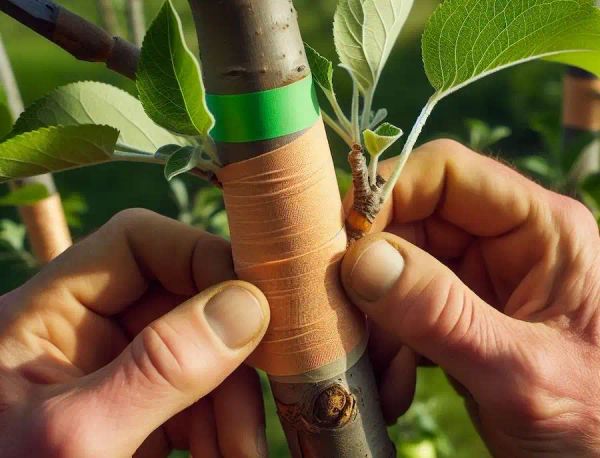
Grafting trees is an amazing technique that allows you to combine the best features of two plants and grow them as one. This method is often used in fruit tree propagation to get the best of both worlds. If you’re interested in learning how to graft trees correctly and efficiently, including the under the bark method, then this detailed guide is for you.

1. Choosing the Right Time for Grafting:
- Late winter or early spring is the ideal time for grafting. This is before the sap starts flowing and allows the graft to heal and grow during the growing season.
2. Selecting Scion and Rootstock:
Scion: Find a healthy, disease-free tree that is one year old and choose a scion from it. The scion should have 2-3 buds.
Rootstock: The rootstock should be compatible with the scion, healthy, and well-established. The size of the rootstock can vary depending on the grafting method used.
3. Common Grafting Techniques:
Whip Grafting: This technique works best when the rootstocks and scions are of similar size. You simply make matching diagonal cuts on both scion and rootstock and join them using the cambium layers, which is the green layer under the bark.
Cleft Grafting: Ideal for larger rootstocks, this method involves making a vertical cut in the rootstock and inserting a scion with a wedge-shaped end into the slit.
Bud Grafting (Budding): During summer, when buds are mature, a bud is inserted into a cut in the rootstock. This method is commonly used.
4. Grafting Under the Bark:
Ideal for: Large rootstocks and when the bark separates easily from the wood, usually in spring.
Process: Make a T-shaped cut in the bark of the rootstock, carefully peel back the flaps of bark and insert the scion (which should have a few buds and a small piece of wood attached). Secure the scion in place, ensuring it’s in contact with the cambium layer of the rootstock.
5. Aftercare of Grafts:
- To prevent drying out, seal the graft with grafting wax or tape.
- Provide enough water and hold off on fertilizing until the graft has fully taken.
- Keep an eye on the graft for any signs of growth or failure and make necessary adjustments to care.

6. Tips for Success:
- Clean your tools thoroughly before grafting to avoid spreading diseases.
- Make precise cuts to ensure the cambium layers have good contact.
- Label your grafted plants for future reference.
- Remember to be patient as some grafts may take time to establish.
Grafting is a rewarding process that allows you to create unique combinations of fruit trees or repair damaged ones. Each grafting technique has its advantages, so choose the one that suits your needs best. With practice and care, grafting can lead to successful growth and a fruitful garden or orchard. Share this article with your friends if you found it helpful!




